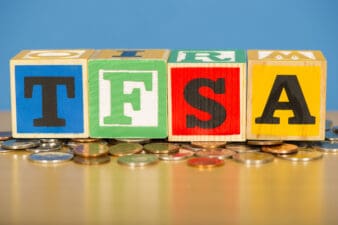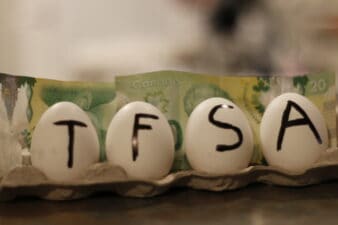Many TFSA (Tax-Free Savings Account) investors who were of age when the account came to be nearly a dozen years ago will see their cumulative contribution limit swell by another $6,000 to $75,500 come 2021. If you’ve yet to contribute and have the excess funds, you may not realize that you have the power to construct a passive-income stream that’s free from taxes from the Canada Revenue Agency.
Let’s assume the base-case scenario and assume you’ve got a TFSA worth $75,500.
That assumes you were of age during the inception of the TFSA and that you haven’t invested any funds within the account. You can stick with the “4% rule” or opt to stretch it a bit further, given the yield bar has been raised across many securities following the 2020 market crash. Let’s take 6% as a mid-point yield target and 8% as the most aggressive target.
Based on average TFSA portfolio yields of 4%, 6%, and 8%, you can expect $3,020, $4,530, and $6,040 in annual passive income, respectively. While Warren Buffett isn’t an advocate of the act of “reaching for yield,” I think that doing so can make sense to a certain extent. Moreover, your portfolio’s yield target should also depend partially on the type of market environment.
Right now, many high-yield securities sport yields that are well above that of their historical averages. Many dividend and distribution payouts are stretched. Some are at risk of being cut. But others, which are backed by relatively resilient operating cash flows, are destined to survive this crisis.
Canada Revenue Agency: There’s no such thing as a free lunch
As you may have heard, there’s no such thing as a free lunch on Wall Street. And that’s true. If you opt to reach for a higher yield, you’ll take on more downside and dividend cut risk, on average. However, that may not always be the case for securities with yields north of the 6% mark. A higher yield can also come at the expense of long-term growth, and that’s something a few folks refer to as “upside risk.”
If you’re an older investor who’s near or in retirement, the traditional definition of risk (downside risk) is more severe than upside risk. The reverse is likely to be true for younger investors such as millennials who have decades to invest and more than enough time to make up for any foolish (that’s a lower-case f, folks!) investing mistakes.
In this piece, we’ll have a look at the 8% yield target, because it’s the $6,000 in monthly income that drew you to this piece. To average an 8% yield, you’ll need to take more risk than with a portfolio that averages a 4% yield. Although the yield is double, the magnitude of risk does not necessarily double, especially if you’ve put in the homework. In some cases, an 8% yielder may be less prone to downside than firms with yields a fraction of its size. Of course, the higher yield and muted downside risk come at the cost of longer-term upside.
The more is paid to shareholders; the less is available for growth initiatives. Moreover, with ETFs such as the covered call line offered by Bank of Montreal, options-leveraging strategies (think covered calls) may add to an ETF’s yield at the cost of capped upside and slightly higher management fees for the labour involved with the writing covered call options.
TFSA: Enter a safe 8% yielder
BMO Canadian High Dividend Covered Call ETF (TSX:ZWC) is a prime example of a super-high yielder by design that trades off upside for premium income upfront.
The premium income generated from options goes on top of the distributions and dividends paid by the ETF’s constituents. The ZWC is a diversified one-stop-shop way to get your TFSA’s average yield to the 8% mark. And the yield is far safer than most other super-high yielders out there, given the ETF screens for dividend quality, among other factors.
Whether the extreme-yield-for-growth trade-off is worthwhile is dependent on the investor. If you could use an extra $6,000 per month to cover the high costs of living, I’d say the ETF is worth the price of admission. For optimal results, hold it in your TFSA if you don’t want to owe taxes to the Canada Revenue Agency.







